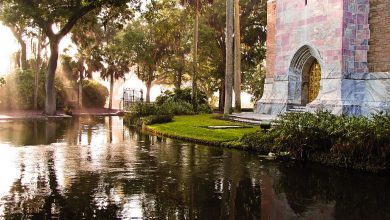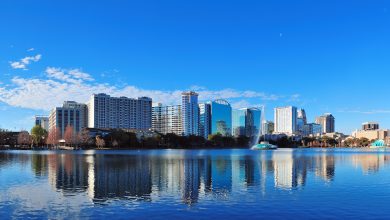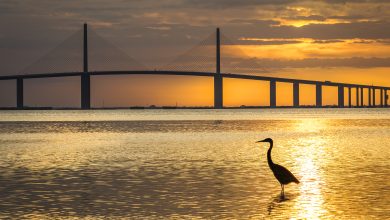Nature, Rockets, and a Mouse: Florida is Just Different
7 things that set the Sunshine State apart from everything else.

Millions of people visit Florida every year—most as a part of their vacations to the Orlando area, Tampa, Miami, Fort Lauderdale and other beautiful cities in the Sunshine State. But there’s more than just ample sunshine that sets Florida apart from the other 49 states. Here are 7 things that make Florida unique.
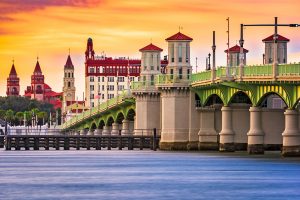
SeanPavonePhoto / Bigstock.com
It’s home to the oldest European settlement in North America.
When we think about the first European settlers in North America, we often think of Jamestown, Plymouth Rock and the like. But truth be told, Florida was the site of the first European settlement in the city of St. Augustine. In fact, 42 years before the settling of Jamestown, Ponce de Leon was in present-day Florida, in search of the Fountain of Youth. And while he didn’t find that, he was responsible for the birth of the city of St. Augustine. The city is only 12 square miles, but there’s lots to see and do. Take your kids to the Pirate and Treasure Museum. Or visit the country’s oldest masonry fort—the Castillo de San Marcos National Monument. If you’re feeling adventurous, book a Segway tour of the city. And when you get hungry for a snack, visit a fun eatery called Hyppo that serves up some interesting popsicle flavors like Reisling Pear and Strawberry Basil, or step in and say hello at French Fry Heaven—a restaurant dedicated to nothing but fries in lots of different ways.
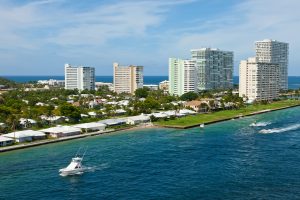
It’s also home to the “Venice of America.”
The city of Fort Lauderdale is situated near the southern Atlantic coast of Florida, north of Miami, and the city has been referred to as the “Venice of America” because of its many miles of waterways. But we think that Fort Lauderdale might just be the better of the two—it’s certainly the larger. Fort Lauderdale encompasses 36 square miles, compared to Venice’s 3 to 4 square miles. And Fort Lauderdale boasts an amazing 185 miles of waterways. Venice—only 26 miles of waterways.
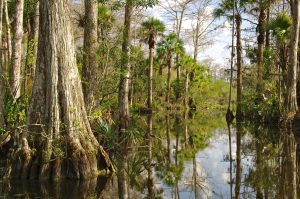
RicciPhotos / Bigstock
The Florida Everglades
Everglades National Park is the largest subtropical wetland ecosystem in North America. The park covers an impressive 1.5 million acres of land, and it’s home to many endangered and threatened species. Since it’s a Biosphere Reserve, there are some areas of the park that are protected and therefore inaccessible to visitors. But there are still lots of places to do some sightseeing, and there are miles of paddling trails. The Everglades are the only place on earth where alligators and crocodiles co-exist. The safest way to see this spectacle is via airboat. Airboat rides are available in the area, and if you’ve never been on one, you need to do it at least once! Visit www.nps.gov/ever/index.htm for more information.
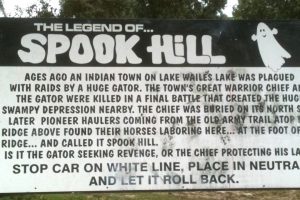
Spook Hill
Spook Hill is located in Lake Wales, Florida. It is a gravity hill, which is actually an optical illusion. Visitors are told to pull their vehicles up to a white line on the road, put their vehicles in neutral and then let the vehicles rollback. But because of the optical illusion, the vehicles appear to roll up the hill, instead of back down the hill. And as with any phenomena—even natural phenomena—there’s a legend, and Spook Hill is no different. The Legend of Spook Hill involves an old Indian Chief and an alligator.
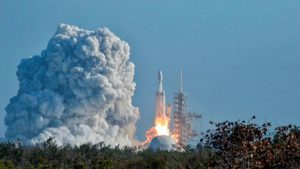
Rocket Launches
Even though we aren’t sending up space shuttles anymore (at least as it stands now), rockets are still being launched from the Kennedy Space Center in Florida. You can visit the Space Center and even book an event to dine with an astronaut on most weekdays. During your meal, astronauts host a question and answer session. Be sure to bring your sunscreen and beach towel so that while you’re in the area you can visit Canaveral National Seashore. The beautiful stretch of beach is pristine and the views of the Atlantic are breathtaking. The only cost associated is a low per-vehicle fee. For more information, visit www.nps.gov/cana.

Downpours
Florida’s weather definitely sets it apart from other states. That’s because the weather in Florida is predictably unpredictable. Most Floridians are used to it—waking up to a warm sunny day, followed by the development of massive, angry, dark clouds in the afternoon that then give way to thunderstorms and rain. Those rain showers are short-lived, but they can be extremely intense as they dump large amounts of rain in a short amount of time. That’s why they’re called downpours. But stick around for a couple of hours, and the blue sky and warm sunshine will return before the end of the day—on most days anyway.

Disney
We can’t talk about Florida without mentioning Disney World. The massive 47-square mile resort has been attracting Guests to the Orlando area since October of 1971. In fact, Disney World is the main reason that the Orlando area has become such a popular tourist destination. In fact, most events in the history of Florida’s tourism industry growth are classified as “pre-Disney” or “post-Disney” events. Before Disney World opened in the early 1970s, tourism in Florida consisted mostly of roadside attractions and places to visit that showcased Florida’s lush vegetation and native land and sea animals. This “eco-tourism” is still a part of Florida today, but with 50 million people visiting the Walt Disney World Resort every year, it’s definitely not the biggest draw to the area for visitors.


